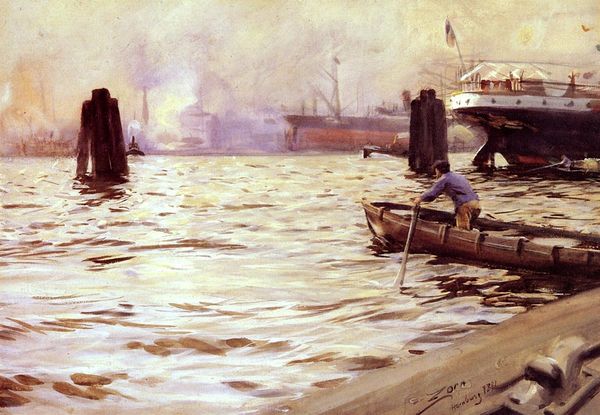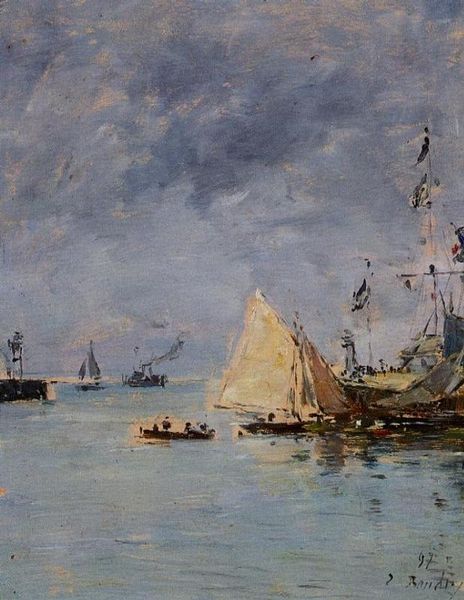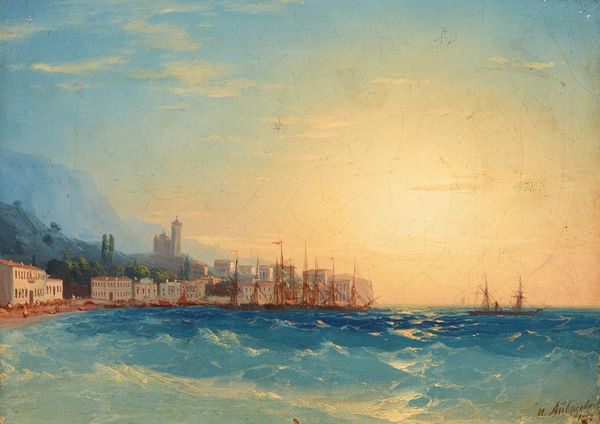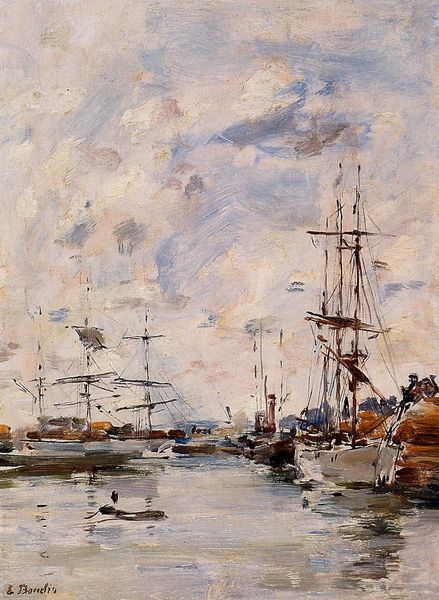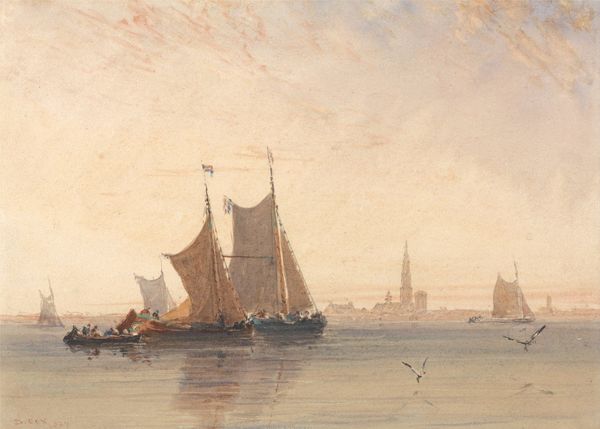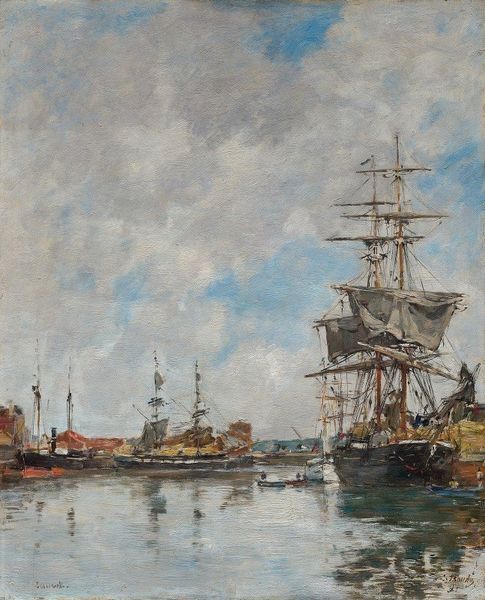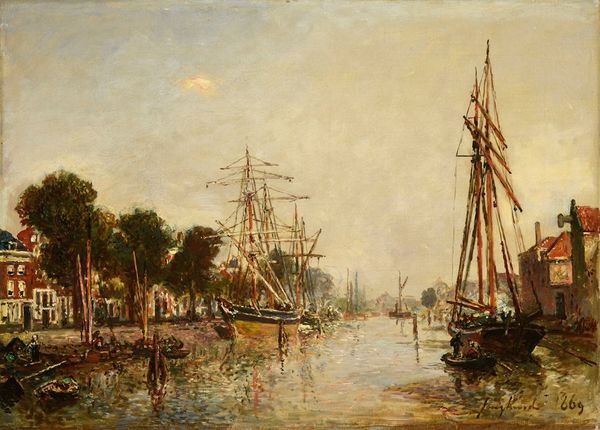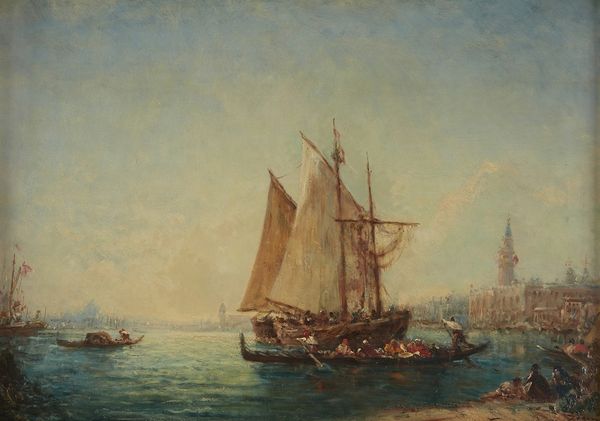
painting, oil-paint, watercolor
#
boat
#
sky
#
urban landscape
#
painting
#
impressionism
#
impressionist painting style
#
oil-paint
#
landscape
#
impressionist landscape
#
oil painting
#
watercolor
#
water
#
cityscape
#
watercolor
Copyright: Public domain
Editor: This is Julian Ashton’s "Circular Quay, Sydney," painted in 1888, rendered with oil paint and watercolor. It has such a dreamlike quality with soft colors and indistinct figures. What are your initial thoughts on its composition and structure? Curator: Immediately striking is the division of the canvas into distinct horizontal registers. We observe a tripartite structure: the dock in the foreground providing a stable base, the active waterway a dynamic middle ground, and the hazy, atmospheric sky which lends the work its pervading light. Consider the positioning of the vessels; do you find anything curious about the arrangement? Editor: The steamships seem to bisect the horizontal plane. How does this enhance the work’s meaning? Curator: Precisely. The steamships function as visual disruptions but are strategically positioned. Their vertical funnels create a counterpoint to the horizontality, introducing dynamism. Further, observe Ashton’s brushwork: short, broken strokes reminiscent of Impressionism are apparent. Consider the textural interplay; what elements contribute to its perceived depth? Editor: The blending of watercolor and oil gives a sense of soft, almost dissolving forms that recede into the distance. Curator: Yes, this is achieved through calculated manipulation of pigment and medium, creating spatial recession through atmospheric perspective. Notice how colour saturation diminishes and the contours soften as forms move towards the horizon. The chromatic relationships here are essential to decoding the overall atmospheric effect; how do they influence the emotional content? Editor: The subtle color variations in the sky certainly evoke a quiet, perhaps melancholic mood. Curator: It is Ashton’s acute manipulation of formal elements such as line, colour and composition that evokes an emotional state through careful organisation of intrinsic visual properties, don't you think? Editor: Absolutely. It’s fascinating to analyze how the formal elements interact to create a specific emotional impact. Thank you.
Comments
No comments
Be the first to comment and join the conversation on the ultimate creative platform.
